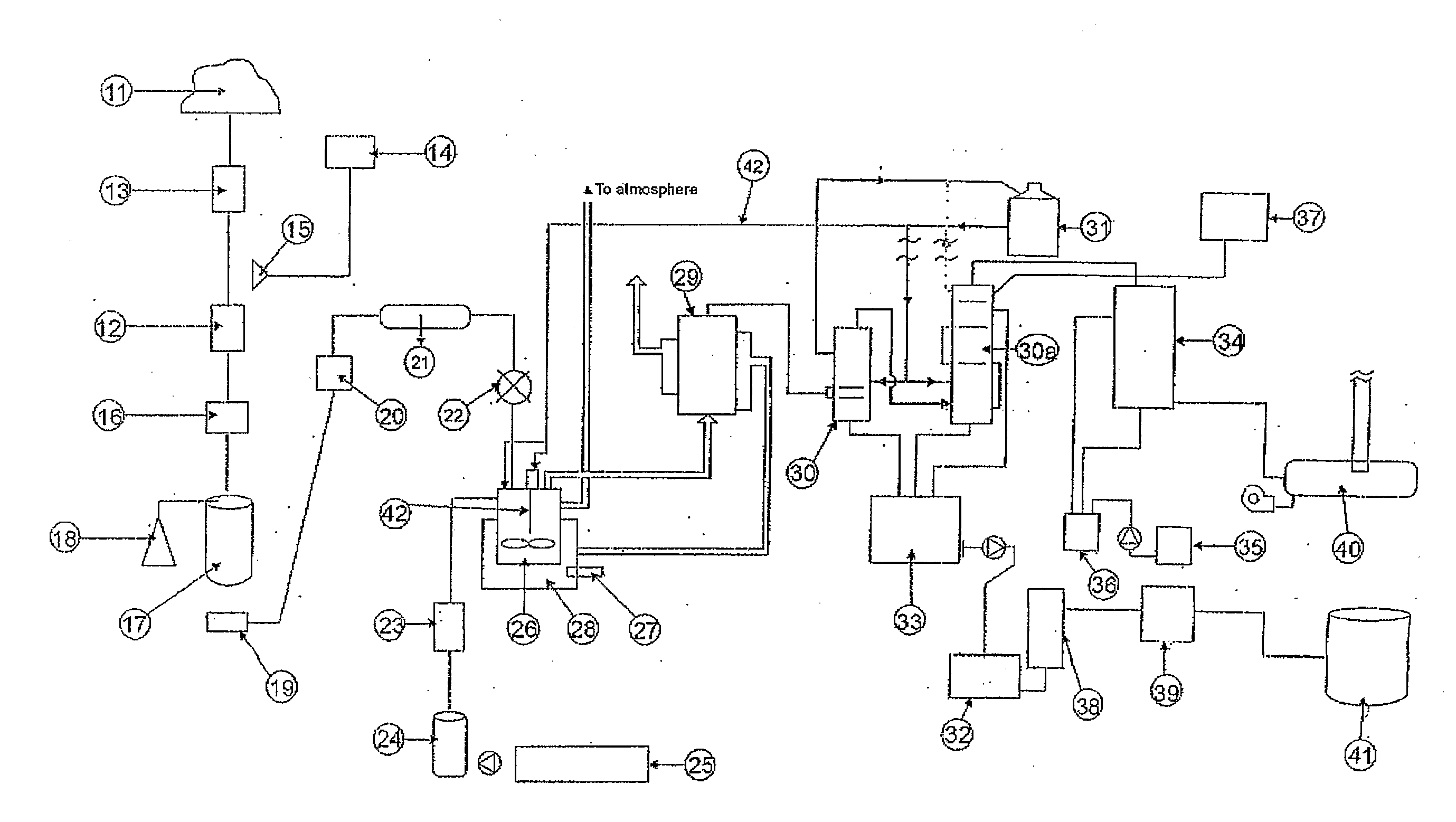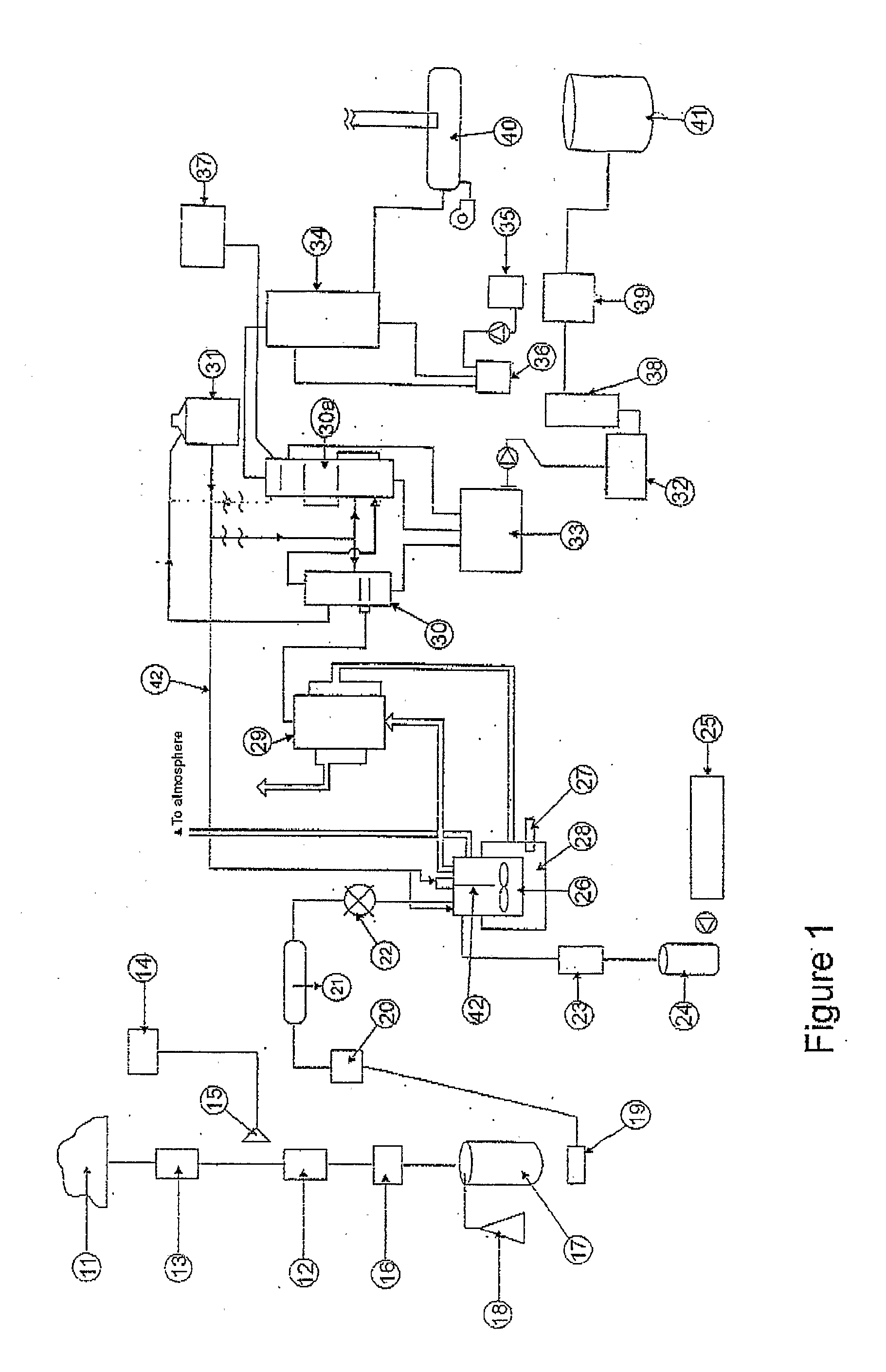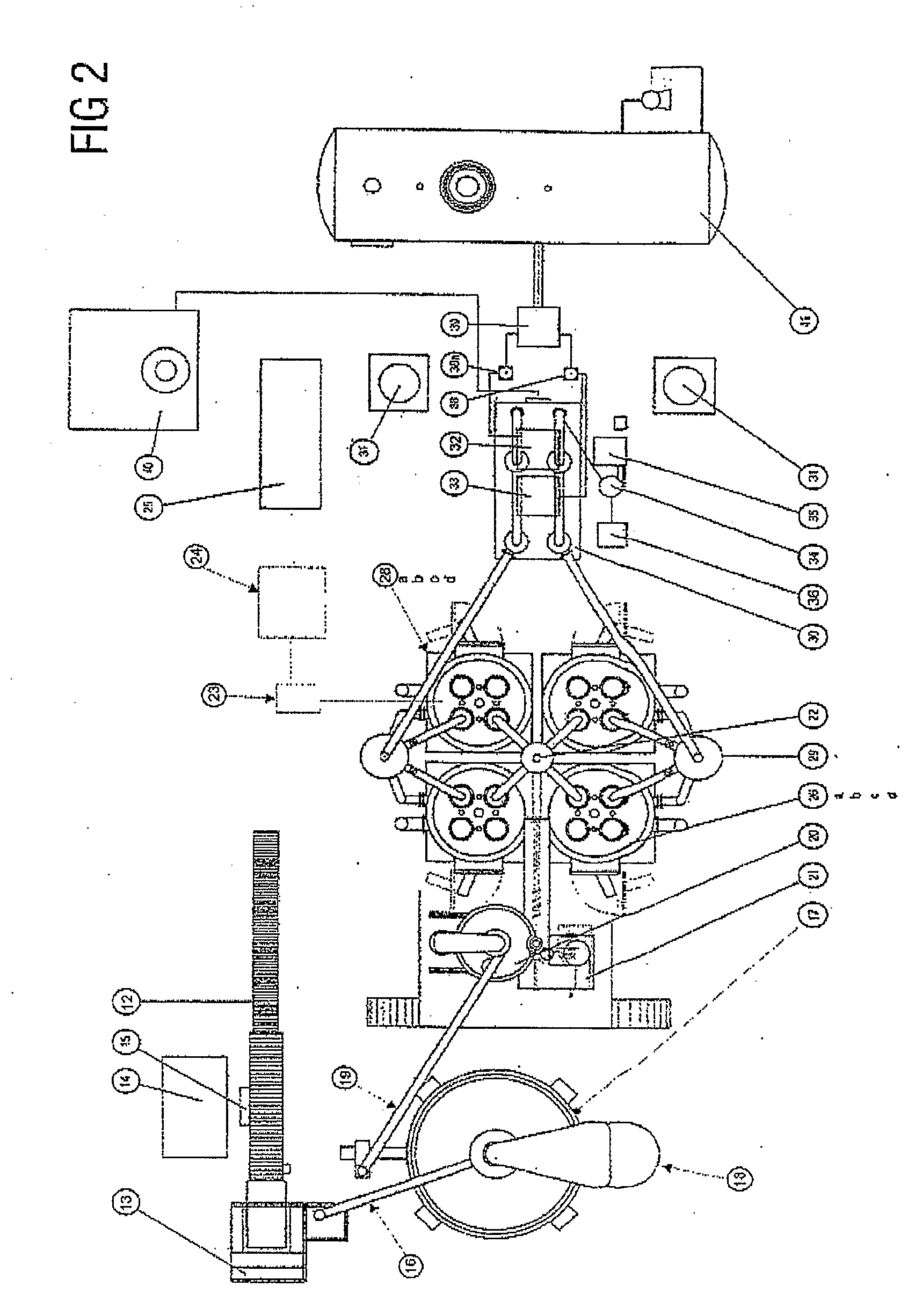Process and plant for conversion of waste material to liquid fuel
a technology of liquid hydrocarbons and waste materials, applied in the field of plastic processing, can solve the problems of inability to recycle waste polymers as fuel, the tonnage of waste commodity plastics, or polymers, is improperly disposed of each year, and the abandonment of many recycling efforts
- Summary
- Abstract
- Description
- Claims
- Application Information
AI Technical Summary
Benefits of technology
Problems solved by technology
Method used
Image
Examples
Embodiment Construction
[0078] Unless defined otherwise in this specification, all technical tears are used herein according to their conventional definitions as they are commonly used and understood by those of ordinary skill in the art.
[0079] Referring to the figures wherein like reference numerals designate like or corresponding parts throughout the several views, and referring particularly to FIGS. 1, 2 and 3, an overview process 6 and plant set up for converting waste plastic to diesel fuel using a batch process according to the invention is shown.
Early Process Operation
[0080] Waste plastics in their original form of plastic sheets, drums, rolls, blocks and flat pieces are placed in a stockpile 11 and moved via an underfloor variable speed pan conveyor 13, through to a granulator 12 to reduce the size of the large items of waste plastic. An over-band magnet 15 and metals container (14) is situated above the conveyor 13 to remove any metals prior to entry into the granulator 12. From the granulator...
PUM
 Login to View More
Login to View More Abstract
Description
Claims
Application Information
 Login to View More
Login to View More - R&D
- Intellectual Property
- Life Sciences
- Materials
- Tech Scout
- Unparalleled Data Quality
- Higher Quality Content
- 60% Fewer Hallucinations
Browse by: Latest US Patents, China's latest patents, Technical Efficacy Thesaurus, Application Domain, Technology Topic, Popular Technical Reports.
© 2025 PatSnap. All rights reserved.Legal|Privacy policy|Modern Slavery Act Transparency Statement|Sitemap|About US| Contact US: help@patsnap.com



